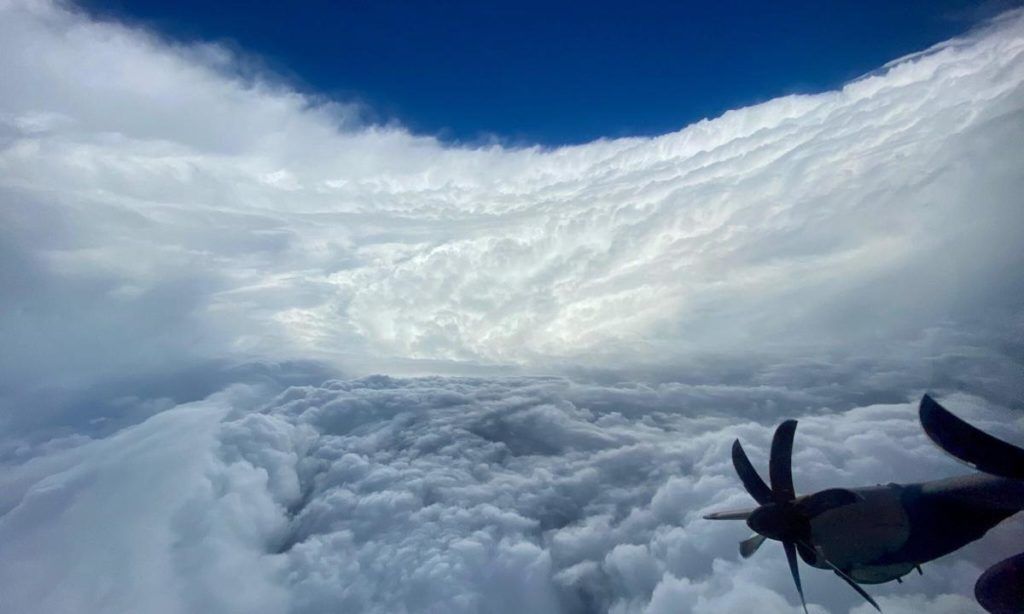9/14/1944: First successful flight into the eye of a hurricane for scientific gathering.
The first flight into the eye of a hurricane happened after a bet. As a Category-1 hurricane approached Galveston, Texas on July 27th, 1943, British flight trainees were instructed to transfer aircraft offshore to a safer location outside the intended path of the hurricane. These trainees were questioning the durability of the AT-6 Texan aircraft and why they could not train on a less fragile platform. Colonel Joe Duckworth placed a bet with the British pilots: he could make it into the hurricane and back safely to prove the strength and prowess of the American AT-6 Texan. Without permission to perform the flight, Colonel Duckworth and Lieutenant Ralph O’Hair flew more than 4,000 feet into the sky, into torrential rain, turbulent air, and encroaching darkness. After a rough ride, they broke through into the ten-mile-wide eye of the storm to witness calm weather and view straight down to the Texas countryside. Another bumpy ride back through the storm resulted in safe landing and shocked base personnel.
After Colonel Duckworth’s return, a weather officer, Lieutenant William Jones-Burdick was stunned but intrigued at the accomplishment. He demanded Colonel Duckworth fly into the hurricane once again so he could record notes and understand what modifications could be done to the aircraft to gather data from the hurricane. After another successful flight, Lieutenant William Jones-Burdick had the information he needed to develop instruments for the aircraft.
On September 14th, 1944, the first flight into the eye of a hurricane strictly for scientific gathering went underway. A three-man crew performed this daunting task in a Douglas A-20 Havoc, strapped with instruments to gather scientific data. Their goal was to translate and understand the science gathered to better prepare the populace and predict the strengths and trajectories of future storms. These pioneers facilitate the “Hurricane Hunter” movement. Prior to these events, all data and predictions were done solely with satellite.
Today, the Hurricane Hunters of the United States Air Force’s 53rd Weather Reconnaissance Squadron operate from the first hurricane to the final hurricane of the year. They pilot a Lockheed Martin WC-130J Weatherbird and other C-130J aircraft at around 10,000 feet. This plane is a cargo plane with four propeller engines with numerous sensors to gather data on wind speed, wind direction, air pressure, humidity, temperature, and other need-to-know data to help scientists and meteorologists understand hurricanes further. Their efforts and data increase the accuracy of trajectory, size, and danger of hurricanes by up to thirty percent. This assists evacuation efforts and helps limit the amount of evacuation needed.
Facebook Post:https://www.facebook.com/MonroeRegionalAirport
Link: Flying Into Eye Of Hurricane Irma (4 min)https://www.youtube.com/watch?v=u7UWWjkpd7o

